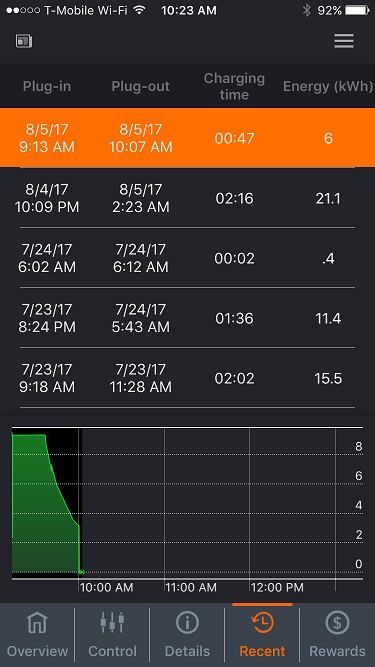TonyWilliams
Well-known member
rayray said:I actually know what the pack voltage is .. It's 386.4 volts - Per Toyota (check the dismantling guide)
I also know, per Toyota a fully charged pack will go 152 miles at 60 MPH, so that is 3.6-3.7 miles per KW which would equal about 42 KW
Well, let's get the terms right! 42kW is POWER, 42kWh is STORED ENERGY.
Yes, if you look at my range chart, you will see that 60mph with a new condition battery with zero degradation will indeed consume about 3.6/3.7 miles per kWh on a level hard surface road, with warm weather, no climate control, no headwinds, etc. It's all on the range chart.
So, it seems, contrary to your opening salvo, that you now agree with my chart!!!
One more point; if 41.8kWh is available, or usable, then the battery MUST be slightly larger to keep the battery from being completely discharged. Lithium batteries don't handle that well. More on that below.
Now according to your own numbers of 92 cells in series (92 x 4.2 volts), that number matches ....386.4 volts
But the 48 in parallel, would equate the pack to to 48KW ( 2.6ah x 48 x 386.4) = 48.2KW
Well, again, 48kW is about 55-60 horsepower. But, since I think you mean 48kWh, then you're a bit too high. You can't base your stored energy calculation on the MAXIMUM voltage, since that voltage will drop all the way to 2.5 volts per cell during its discharge.
You also can't just calculate the average cell voltage range, for example ((4.2 volts * 2.5 volts) / 2) = 3.35 volts, since the stored energy is not linear to voltage.
So, the manufacture will generally publish a voltage to use for the calculation derived from testing. Try 3.65 volts per cell and see if you get something close to 45kWh for the RAV4 EV battery. When the battery is new and warm, it will provide 41.8kWh usable out of that 45kWh battery. The Tesla battery management system (BMS) will not allow the battery to be completely discharged.
Also to address the other post, yes I have connected to the car via techstream, and when I posted on this site that it showed 34.1 KW with regular charge which meant no degradation, it was you, yourself that dismissed it and said, it's not realistic.
You don't seem very open to coaching, so I won't go into the details of why that data doesn't help you determine degradation, but I have posted why on this site more than once. In detail.
You are also giving the BMS too much credit ... The capacity it calculates is based on how much it puts into the battery before it hits 4.2 volts ... I can send you many batteries that have a very high resistance, and will take more change than good 18650's with 2 AH capacity, yet not be able to provide more than .25 AH capacity.
I'm going to go with Tesla data over your very flawed understandings of our RAV4 EV.. Sorry.
You are also saying these are 2.6 AH Panasonic batteries, and they are charged to 4.2 volts, and if that is the case, then that means on the numbers that you provided, the pack is 48KW. and not 41.8, which means it's software limited ?,
No, they aren't "my numbers". I described above why your numbers are wrong.
and if so, then how can you truly measure degradation correctly ? Seems to me, you would not see any for 100K miles, unless you abused them to 5% SOC on every use.
Well, at least you're asking questions. That kind of information is all over the internet. If you want to believe that these cells don't degrade to 100,000 miles, I'll just suggest that you are quite the optimist. Realistically, these batteries will likely be around 20% degraded, plus or minus 5-10%.
Anyways, this has gone down enough rat roles .... For me it's a not a valid test of capacity, but for everyone that wants to do it, by ole means, it's definitely educational ...
I'll leave it be ...
Thanks ....
You popped on here, posted that everything was wrong, and that you had the "real" answers, and now you're done? You didn't really think I was going to let you slide, did you?
Good luck with your RAV4 EV.

























